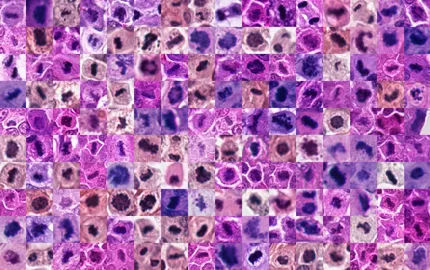Presentation

An increasing number of new technologies enable the study of living organisms on a hitherto unexplored scale. For example, next-generation sequencing can be used to read the complete genetic information of a biological sample, mass spectrometry characterizes proteins expressed in a tissue, high-resolution imaging tracks changes in cell cultures, and high-throughput screening characterizes the biological activity of a large number of molecules. In addition, electronic health records contain large amount of text data, images, or biological time series that describe the dynamics of patient diagnoses and response to treatment.
These technologies all generate huge amounts of raw data, which are often difficult to comprehend directly. To exploit these massive amounts of data more effectively, and notably to extract from them relevant biological and medical information for predictive and precision medicine, our team is developing mathematical methods and innovative algorithms. To achieve this goal, our team combines extensive expertise in mathematical modelling, statistics, machine learning, bioimage informatics, bioinformatics, and a fine understanding of the underlying biological processes, in the fields of structural biology, genetics and cancerology.
We are developing new tools and methods to examine specific questions of medical or biological interest, notably:
- In silico basic and systems biology: We develop innovative approaches to tackle various biological aspects of living systems. Our work aims notably at reconstructing biological networks from omics data, model tumor progression at the genomic, transcriptomic and epigenetic level, automatically annotate new proteins and functional elements through integration of complex and heterogeneous data, including data obtained from high-throughput sequencing, time-lapse video-microscopy or Genome Wide Association Studies.
- Towards predictive and precision medicine: We develop tools to classify tumors and identify biomarkers for diagnosis, prognosis, and prediction of drug response. These classifications are based on large amounts of data including clinical data, somatic mutations, gene and alternative transcript expression, epigenetic state, or structural DNA modification, and involve high-dimensional statistical machine learning techniques.
- Drug design: We develop new virtual screening and chemoinformatics methods. This can help identify new molecules likely to inhibit specific therapeutic targets and to lead to novel drug candidates. We make use of sequence-based, graph-based, and 3D representation of proteins and their ligands, and develop in silico chemogenomic approaches to analyze jointly the chemical space of small molecules and biological space of protein targets, leading in particular to the prediction of secondary targets, efficacy profiles, and adverse effects.






















